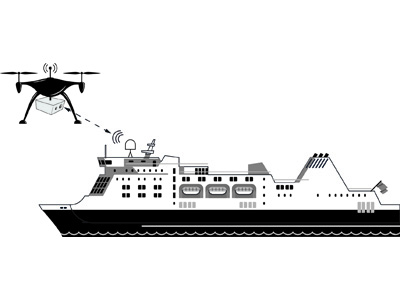Atlantic Microwave has claimed a world’s first simultaneously in two "of the moment" technologies.
Well-known globally for its innovative approach to SATCOM off-air testing, Atlantic Microwave has announced the maiden flight of its DSS Satellite Simulator product on board an eight rotor drone. Not only is this a first ever airborne Satellite Simulator but it is the first time in history that an unmanned aerial vehicle (UAV) has been deployed in such a task.
Off-air testing of ground and vehicle-based SATCOM systems has developed into a major industry need with the current explosion of SATCOM applications in multiple industries.
SATCOM systems cannot just switch on and hope for the best. The potential to upset fellow satellite users is both risky and expensive and Atlantic’s Satellite Simulator and Loop Test Translators have been saving the day for SATCOM operators worldwide in recent years.
Drones, similarly, have been taking the world by storm with uplifting applications both professional and amateur. In combining these two major advances in human endeavour, Atlantic Microwave has provided a service to customers which is currently unrivalled.
While the first flight, which has taken place in Denmark, used frequencies in the Ku-Band for "proof of concept," Atlantic is also offering similar payloads in Ka-Band, which delivers greater bandwidth, X-Band for the military as well as future Q- and V-Band operations.
Speaking at the product announcement at the Royal Festival Hall in London this month, Atlantic’s CEO, Geoff Burling, said, “We are in an exciting age where new technologies are shaping our current and future lifestyles. At Atlantic Microwave, we embrace these advances and seek, innovatively, to create solutions in all kinds of communications industries.”
Atlantic Microwave, based in Braintree, U.K. has established itself as the global leader in satellite simulation with its antenna and cabled-in based products, which have now been supplied to major SATCOM operators, integrators and manufacturers on all continents.

